Adjusting to school:
How to help your child prepare for school and feel safe and confident
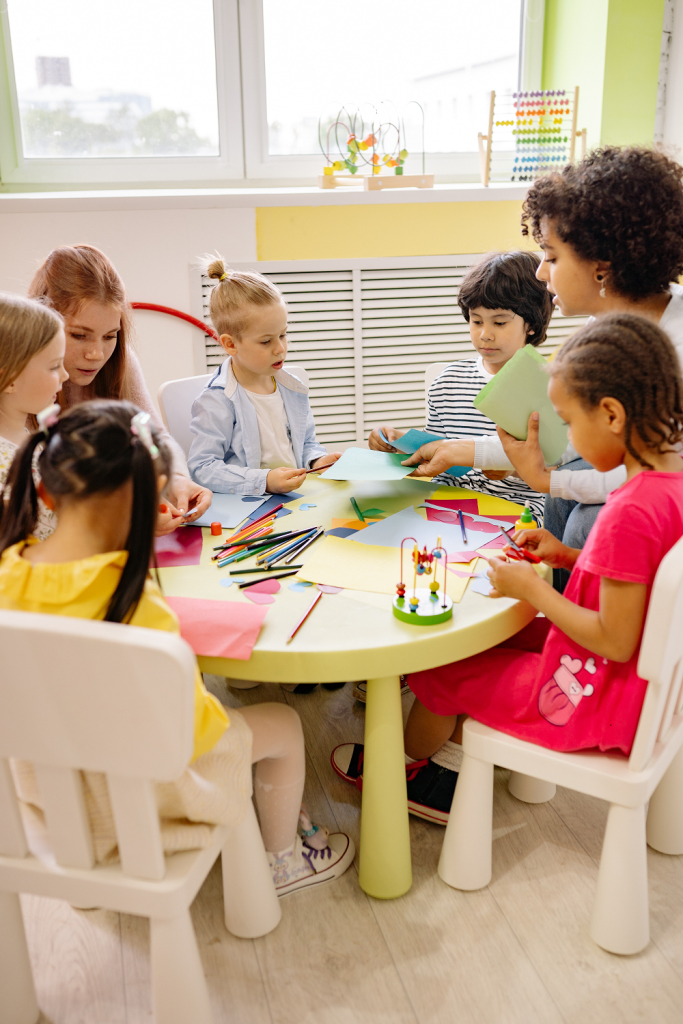
Back-to-school season is here again, and with it comes the mix of excitement, worry, and separation anxiety that so many families know too well.
Whether your child is starting preschool, kindergarten, or moving up to a new grade, that first day brings big feelings, for children and parents alike.
This guide offers practical, neuroscience-backed tools to help you create smoother mornings, calmer goodbyes, and stronger emotional security as your child begins the school year.
Before the first day: Preparation begins at home
Adjusting to school starts long before the first day. Your child needs to feel that they know what to expect, that they have some control and that you are there for them no matter what. This doesn’t mean that your child won’t cry or have difficulties, but it does mean that they will feel supported and safe in this new beginning.
Talk about school with honesty and calm:
Don’t promise that “Everything will be great” or “You’ll have many friends,” as this can lead to disappointment if things don’t go as expected:
👉 “You may feel a little uncomfortable at first, and that’s completely normal. It’s not always easy to say goodbye, especially when we’re starting something new. Remember, it might take some time to get used to the new situation and that’s okay. I will be by your side every step of the way, and together we’ll figure out how to do this in the best way.”
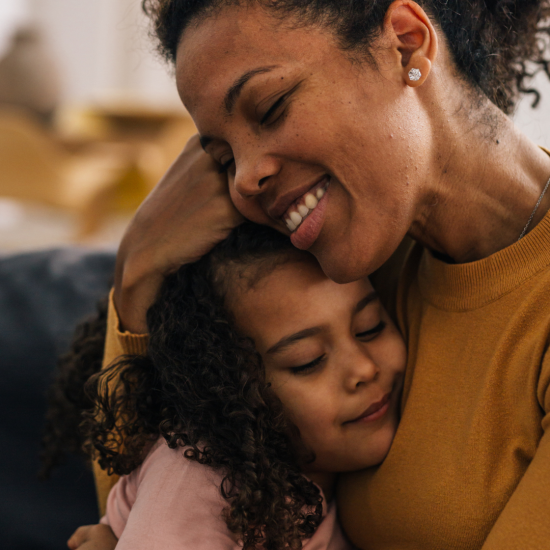
Explain what will happen in simple terms, without exaggeration or dramatization:
👉 “At school, you’ll have a teacher and you’ll meet other children. You won’t know each other at first, but slowly you’ll get to know each other. Every morning I’ll take you there, we’ll have a big hug and a big kiss, and then we’ll say goodbye for a while. And the best part? In the afternoon, when I come to pick you up, I’ll be waiting for you with great joy so we can share our day and talk about what we did when we weren’t together.
Children feel safer when they know they don’t have to be “perfect” or successful at everything from the start. If parents try to sugar-coat situations or protect them from uncomfortable feelings, this often leads to more anxiety and less trust. It’s natural for them to have difficult moments and it’s part of their developmental process. Our job as parents is to support them, to give them confidence and to show them that they can succeed in spite of the unpleasant feelings and difficulties.
Visit the school together:
If possible, go to the school together before the first day. Show them where the classroom, playground, and bathroom are. If possible, meet the teacher as well. These small details make a big difference in helping your child feel that he or she knows the environment and is not lost. Familiarity with the space reduces anxiety.
Prepare school things together:
Involve your child in the whole process of getting ready for school. Go shopping together for school clothes, a backpack, a water bottle and anything else you need. At home, organise the school supplies together and practice packing the backpack and where you’ll store the school stuff. This will give your child a sense of control and help them feel safe.
Read books about school together:
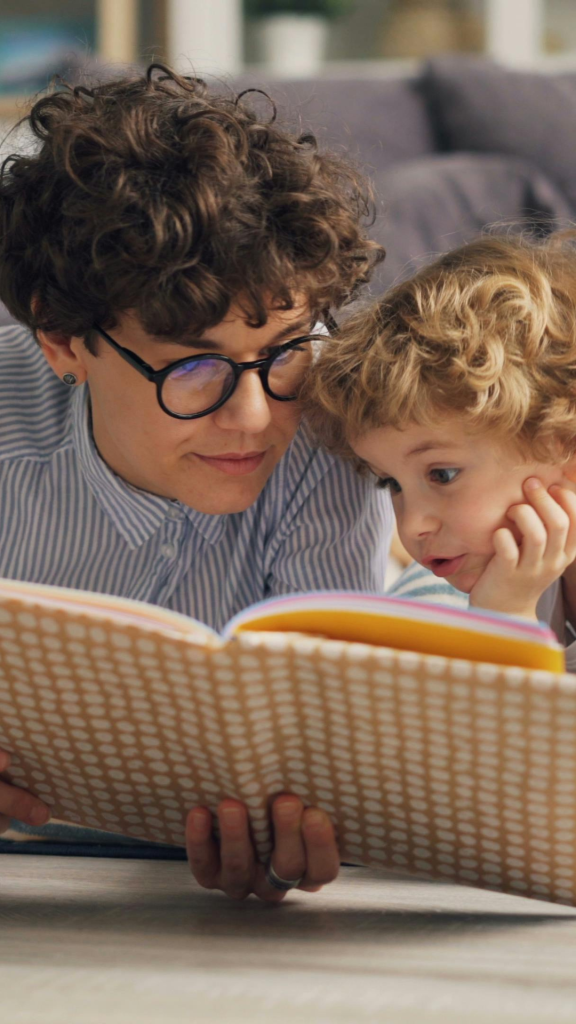
Books are an excellent way to prepare your child. Buy books that talk about school, doing something new for the first time, separation and feelings. Books can help your child identify with the hero, recognise their own feelings and feel less alone. Choose books that encourage curiosity and a positive attitude towards school.
5 Feelings kids have on the first day of school
and the perfect book to help

| Feeling | Books |
|---|---|
| 😢 “I’ll miss you!” | The Kissing Hand |
| 😟 “What if I worry too much?” | Wemberly Worried |
| 🙈 “I don’t want to go!” | Llama Llama Misses Mama |
| 😲 “I’m nervous…” | First Day Jitters |
| ❤️ “I need to feel close.” | The Invisible String |
How to handle separation
A smooth separation DOES NOT mean separation without tears.
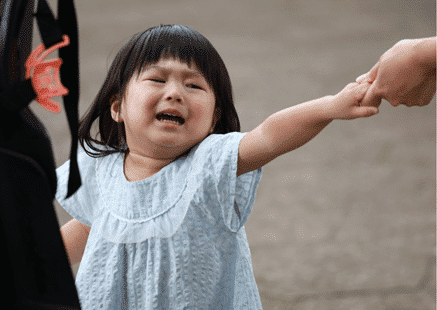
Watching our child struggle with separation is likely to fill us with feelings of anxiety, triggering “protective” mechanisms because we feel that our child is not okay, possibly even guilt, thinking “I put my child in this position.”
You may want to tell them that everything will be all right, or try to reassure them in some way to stop them crying. You may think that convincing them will make it easier for them to accept the situation. However, as much as we want to, this process of negotiation and the “carefree” comfort we try to provide is not what our child really needs.
Your child needs to feel that they can trust your calm and reassurance. If they feel that we’re trying to “get rid” of them quickly because we can’t cope with the difficulty of separation, their anxiety will only increase. Our child is smart, they can sense our emotions and if they feel we’re rushing to leave, they will understand and develop feelings of insecurity.
What they really need is to see that while it’s normal to feel upset, we will remain calm, confident and supportive. The strength of our bond, the emotional security we provide, is what will help them cope with the emotions of separation.
So while our child may be crying, they know that we will return and that our attachment is secure. The “secure attachment” we seek is what will allow our child to feel safe and face any transition, such as separation, with more confidence. They need to know that separation is hard for everyone, but with our support they’ll get through it.
The most important thing is to remain calm and reassure them that although they may feel uncomfortable now, you will be back and everything will be fine. This message will reach your child’s heart because what you feel and radiate is what your child perceives. Give both of you time to adjust to the new situation.
Stay calm and steady:
If the child cries or tries to hold on to you, stay calm and show empathy.
👉 “Sometimes it’s not easy to say goodbye, it’s hard to part. It’s okay to miss me, I’ll be thinking about you too. Until it’s time for us to meet again, would you like to draw a heart on each other’s hand? That way, whenever you miss me, you can touch the heart and remember how much I love you and that I’ll be back soon to pick you up. In the afternoon, I’ll be here waiting for you with a big hug.”
If the child sees that you are confident, he or she will feel more secure.
If the child continues to cry or refuses to separate, stay firm and calm:
👉 “I understand it’s hard to stay here without me. You can hold the heart and think about how much I love you. I’ll be back as soon as school is over and I’ll be waiting with a big hug.”
By showing empathy and confidence without rushing, you’ll help your child feel that your bond remains secure even when you’re apart for a while.
Don’t “disappear” secretly:
Some caregivers suggest such practices. Leaving without saying goodbye makes the child feel insecure, anxious, and that you can’t be trusted. Even if the child or you are struggling, it’s important for the child to know that you’re leaving and will be back. Be sure to be consistent about when you’ll be back.
Predictability soothes:
Young children are often afraid that mom or dad will disappear and they won’t know how to get back. Explain to them in simple and clear terms that you will always come back for them. Give them specific information, such as
👉 “I’ll pick you up right after lunch.”
👉 “I’ll meet you at the door like every day.”
👉 “When you look at the clock and see the little hand at 3 o’clock, you’ll know it’s almost time for me to come.”
Being consistent with this information will help reassure your child, especially in the first few days. Your child needs to feel that he or she knows what to expect and that you are stable and predictable, even when the transition is difficult.
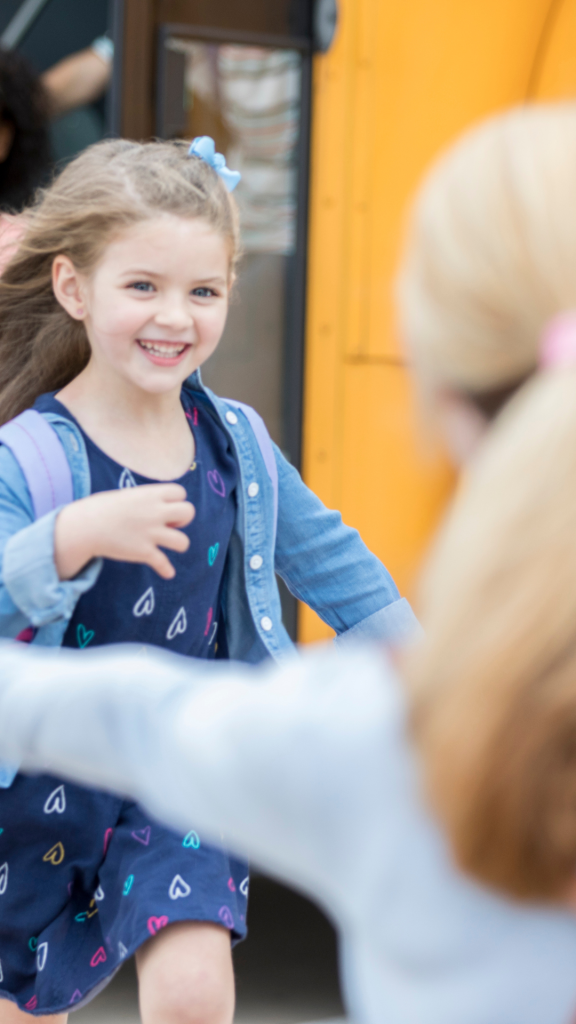
The power of the transitional item:
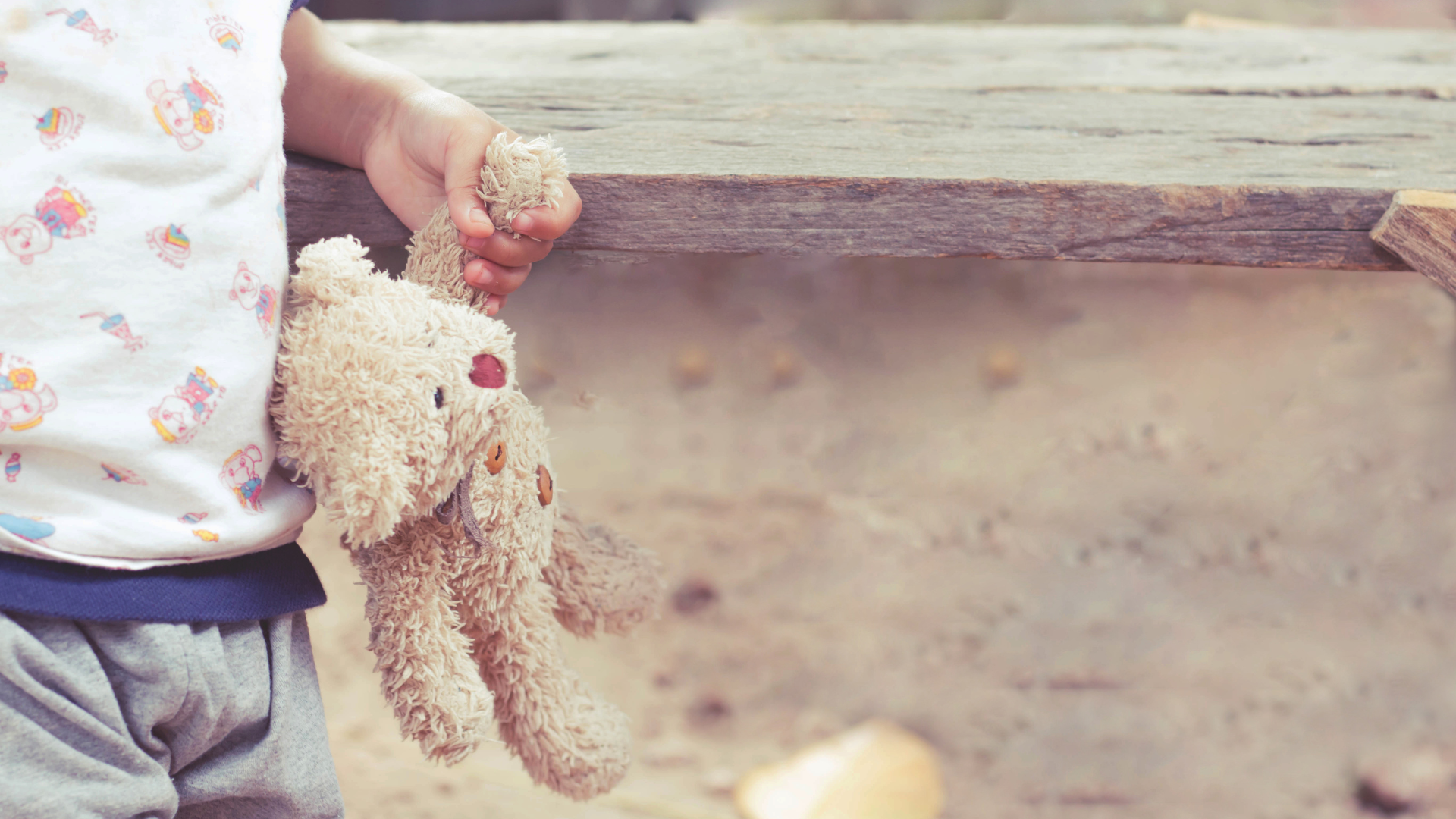
Choose a comfort item that connects your child to you. For example: a drawing you made together, their favorite teddy bear, or a photo of you. This object acts as a “bridge” between home and school, giving your child a sense of familiarity and security when he or she needs you.
The transition object doesn’t have to be anything complicated; it just has to hold emotional value for the child. It could be a heart drawn on their hand, a piece of cloth with your scent on it, or even a small object that reminds them of your connection.
When the child holds or sees this object, they feel that you’ve left a part of yourself with them, and this gives them the strength to deal with the difficulties of separation.
After school: The importance of reconnecting
Welcome your child warmly, not with questions:

Instead of immediately asking “How did it go?” or “Were you good today?” try saying:
👉 “I’m soooo happy to see you!”
👉 “I missed you today!”
This will reassure your child that your connection is safe, no matter how their day went.
Accept the feelings without taking them personally:
When you pick up your child from school, they may greet you with strong emotions. They may cry, act aggressively or seem very quiet and withdrawn. This is normal. It doesn’t mean you’ve done anything wrong.
Your child is releasing the emotions they have been holding inside during the separation. They feel safe enough with you to express what they’re feeling. If they’re angry, they may feel that you’ve “let them down” or that they’re having a hard time adjusting without you. If they’re quiet, they may still be processing their feelings.
If your child cries or reacts strongly when you return, stay calm and acknowledge their feelings. You can say:
👉 “It’s been hard today, hasn’t it? I missed you too. I’m here now. You’re safe.”
If they are angry or aggressive, remember that it’s their way of dealing with the stress of the day. Show understanding and keep healthy limits without allowing harmful behavior. If they hit you, calmly block their hands and say with confidence:
👉 “I can see you’re really angry. I understand, but I can’t let you hit me. If you want, we can hug or sit together until you feel better.
Remember: We accept all feelings, but not all behaviors.
There’s an important difference here, and many parents get confused; either by allowing every kind of behavior in the name of acceptance, or by shutting down unpleasant feelings because they come alongside challenging behavior.
For example, it’s okay for a child to feel angry, but it’s not okay to hit. 👉 “It’s okay to feel like hitting. That feeling is telling you you’re angry. What’s not okay is hurting someone. Instead, here’s what you can do…”
If they’re quiet, give them time to adjust, and offer a warm hug when they’re ready. The key is to accept their feelings without taking them personally. Children express separation anxiety in different ways, but your calm and steady presence will help them feel safe.
Listen actively without pressuring:
As much as you may want to ask 100 questions to find out everything, hold back. Your child needs to feel connected to you again – not to go through an interrogation (which they probably won’t be able to answer at that moment anyway).
Let them share what they want, at their own pace, and only if they want to. If they’re not ready to talk right away, give them space. You can say:
👉 “When you feel ready, I’d love to hear about your day – and I can tell you about mine if you’d like”.
Create a simple after-school ritual:
A consistent, positive ritual after school can help your child relax. A walk, a snack, or a cuddle on the sofa can help build a sense of security and connection.
You can also create a ritual for the moment of separation. Rituals give children a sense of involvement in creating them and reinforce predictability – and therefore a sense of security.
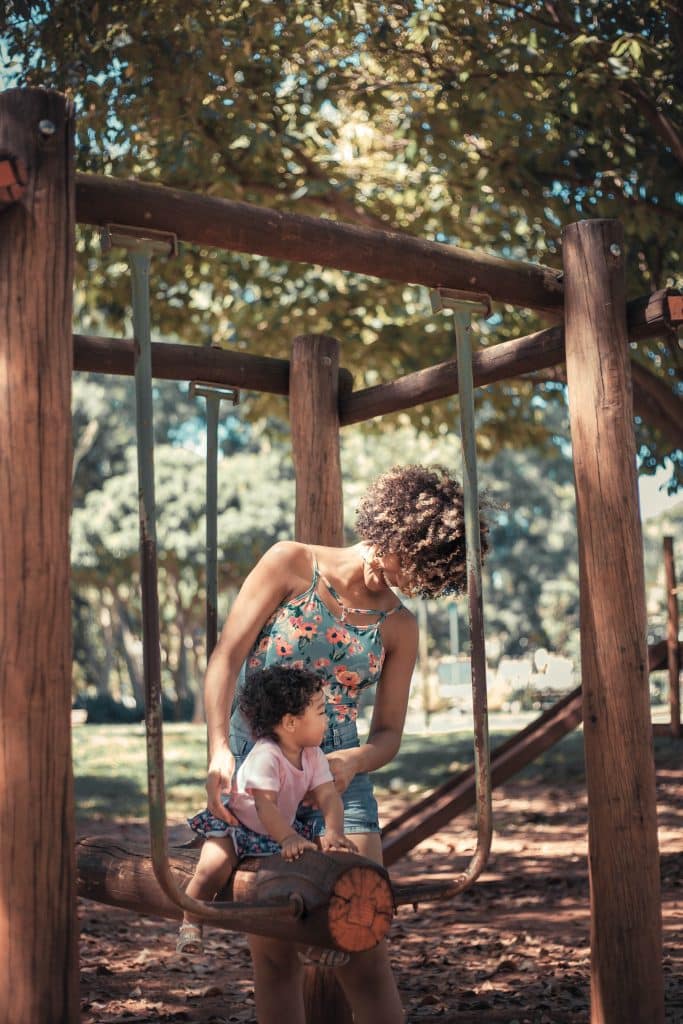
If your child continues to struggle:
Starting day care or school is a big transition for children.
Adapting to day care or school is a dynamic process that takes time and patience. Children need to feel safe and secure in order to adapt smoothly to a new environment. It’s normal to experience challenges or setbacks during this transition.
Your child may need extra emotional support or guidance, especially in the first few weeks. If you notice that difficulties persist or increase, it’s important to recognize their needs and adjust your approach accordingly. Stay in touch with your child’s caregivers to get a full picture of your child’s adjustment.
Take time to observe your child’s behaviour. How do they react when you drop them off or pick them up? Do they seem to be struggling or adjusting gradually? These observations will help you understand where more support is needed and adapt your approach to meet their needs.
Adaptation is a process that requires consistency, understanding and patience. With your calm and confident presence, your child will feel secure and be able to face this transition with greater confidence.
Remember
👉 Difficult emotions are part of life and shouldn’t be avoided. They are messages that we need to learn to manage, not escape.
👉 Build trust and resilience with your child.
👉 The first day at school or nursery may go more smoothly than the second or third.
👉 Separation is hard. It marks the end of one period and the beginning of another. This transition often brings a sense of loss – not only for the child, but also for the parents.
For the child, moving from the safety of home to school or day care brings uncertainty and fear of the unknown. For parents, separation can bring feelings of sadness, guilt or even doubt – “Maybe my child isn’t ready”, “Am I making a mistake?
Your child doesn’t need to be “strong” or “ready” from day one. They need to feel that you’re stable and confident, even when they’re struggling. That’s what will ultimately help them adapt and feel safe. ❤️
Are you ready for this new beginning? You and your child can handle this — together!
💡 If you feel that your child is struggling with this transition or you need support to help them through it, I’m here for you.
👉 Every first day of school is not just a milestone for your child, it’s a milestone for you as a parent. If you’d like more personalized guidance on easing separation anxiety, building confidence, or creating calmer family rhythms, I’d love to support you. You can book a free 30-minute discovery call with me here.
Editor’s Note: This article was originally published in March 2025 and has been refreshed for the back-to-school season. These strategies remain some of the most effective tools for supporting children (and parents!) through the first day of school.